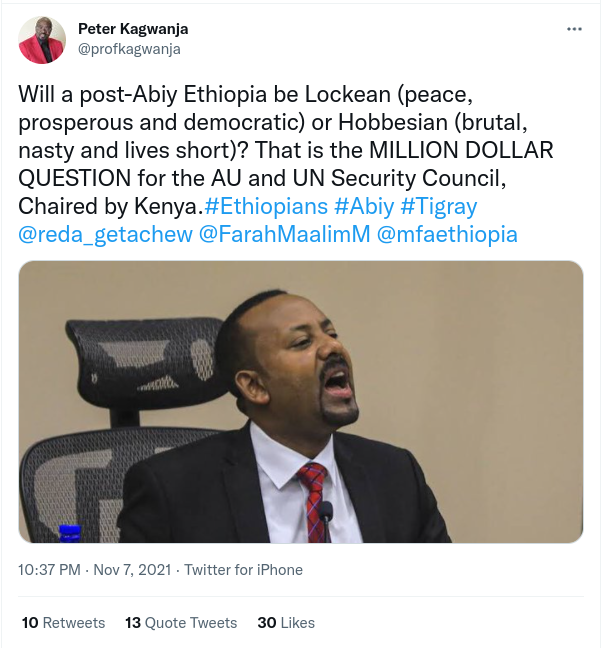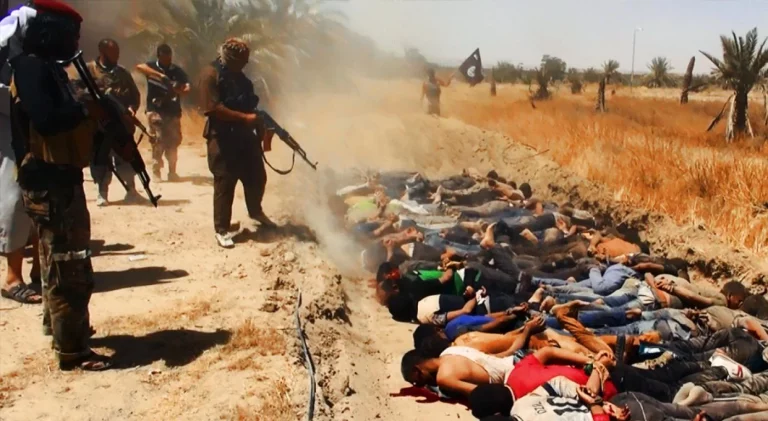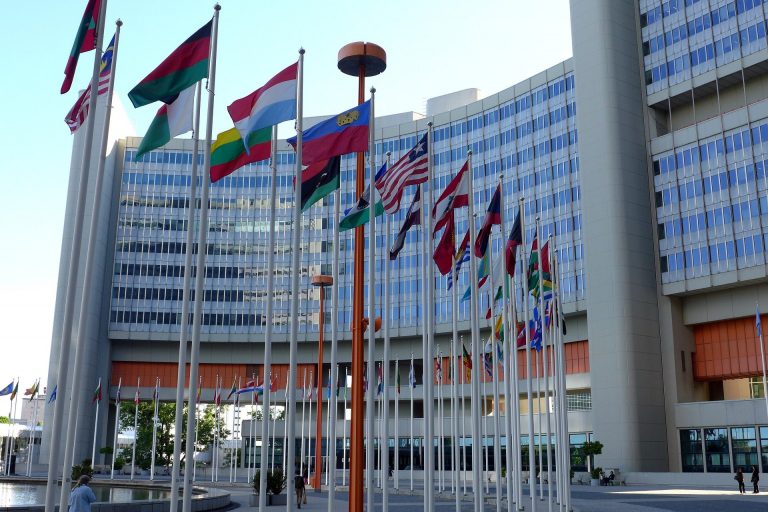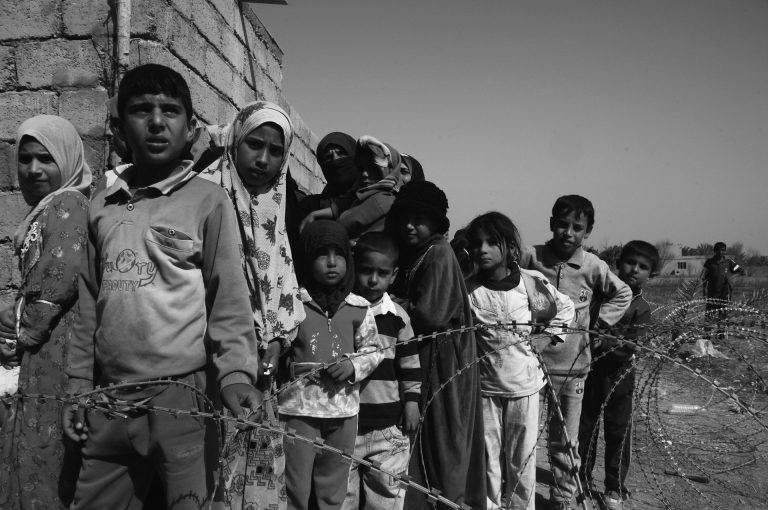The position of a state within the international system is determined by its geopolitical and geostrategic strengths and vulnerabilities. For this reason, state behavior is heavily influenced by the need to maximize its power as well as leverage its strategic weakness. Nonetheless, pure military strength does not usually equate to a favorable geostrategic position within the international system, and there is thus a need to leverage diplomatic power with astute foreign policy goals so as to ensure the vital interests of the nation-state are protected. Offensive realism conceptualizes the international system as inherently anarchic, and for this reason, it postulates that a nation must act aggressively so as to protect its vital interests (Elman & Jensen, 2014). Thus, a foreign policy strategy informed by offensive realism would be aggressive, but such a strategy also risks upsetting international peace and order. This thus raises the pertinent question regarding the appropriateness of offensive realism as a foreign policy strategy for the 21st century. This essay argues that offensive realism is an appropriate foreign policy strategy for the 21st century, though the extent of its influence on foreign policy should be limited to only those aspects of foreign policy that relate to international politics, international diplomacy, international security, and strategic affairs.
This essay explores the concept of offensive realism, its utility, and relevance as a foreign policy stratagem, as well as its impact on international security. Offensive realism is closely related to defensive realism with the main difference being that offensive realism incorporates the philosophy of positivism in its theoretical framework, while defensive realism does not. Defensive realism also conceptualizes that the vital interests of a nation-state would be best protected if the nation-state accumulates power. Nevertheless, defensive realism will not be further discussed in the paper.
Offensive Realism
The theory of offensive realism was conceived by John Mearsheimer as a neorealist structural theory to explain the aggressive behavior of nation-states. The theory postulates that the international system is intrinsically anarchic in nature and that this fact has forced nation-states to adopt an aggressive stance when dealing with international politics so as to ensure that their security and viability as sovereign nation-states are not only preserved but are also protected (Elman & Jensen, 2014). The theory has evolved into different variants as different scholars interpreted and refined it. These variants have been applied as foreign policy strategies for the 21st century with varying efficacies (Johnson & Bradley, 2012).
Even so, the predominant variant is the one conceived by John Mearsheimer as conceptualized in his original thesis: The Tragedy of Great Power Politics (Johnson & Bradley, 2012). The thesis integrates several concepts from classical realism and the distinct philosophy of science known as positivism to build a system-centric approach to understanding state behavior in relation to the dynamics of the international system and its attendant international politics (Mearsheimer, 2001). This variant has had a great impact on the formulation of foreign policy strategies for the 21st century as is discussed later on in the paper. The thesis postulates five core tenets that define offensive realism, and these tenets still serve as the core foundations of present-day offensive realism. These tenets or core foundations are described below.
Core Tenets and their Relation to Present-Day Foreign Policy
The theory posits that nation-states are rational actors which are unsure of the intentions and capabilities of other states, as well as the actual and potential threat that other states pose to the existence of their nation-states (Elman & Jensen, 2014). This position underlies the five core tenets of offensive realism as described hereafter. It also relates offensive realism to 21st Century foreign policy.
The first tenet of offensive realism postulates that great powers serve as the dominant actors in international politics and that the international system is intrinsically anarchical (Elman & Jensen, 2014). This implies that the global balance of power in this century is fluid in nature, and is bound to change if one of the great powers loses its international clout. Likewise, the great powers would also favor creating and maintaining an acceptable status quo that permits them to maximize their powers (Mearsheimer, 2001). This explains the incorporation of offensive realism into the foreign policy strategy of the nation-state of Georgia as it sought to deter Russian aggression in the past decade as is explained later.
Due to the reality of entropy, this status quo is bound to be short-lived as the great powers strongly harbor aggressive intentions which act as a strong incentive for them to use offensive action to optimize their security, as well as maximize survival prospects (Van Evera, 2013). The use of offensive action is influenced by two aspects; anarchy in the international system, and possession of offensive military capabilities. The anarchy which characterizes the international system is caused by the absence of a credible and all-powerful central authority that is capable of maintaining global order. This absence results from the multi-polar nature of the international system where no great power serves as the ultimate global hegemon (Mearsheimer, 2001). Thus, no single great power can unilaterally enforce rules, and this absence of a central authority able to enforce rules leads to a form of anarchy within the international system. Thus, nation-states presently use offensive realism to format foreign policies which would assure their survival in this present global order.
The second tenet of offensive realism postulates that nation-states possess offensive military capabilities (Elman & Jensen, 2014). This normally fosters inter-state security competition as each nation-states attempt to influence the course of international politics in its favor, and this risks igniting conflicts and intractable wars (Van Evera, 2013). Without a central authority that can reassure nation-states of their survival in the international system, nation-states are forced to consider offensive military capabilities as a self-help mechanism that assures their survival in the international system (Mearsheimer, 2001). For this reason, a nation-state strives to maximize its relative power and strength vis-a-vis other nation-states; and this acquisition of increments of power is aimed at altering (or stabilizing) the balance of power so as to ensure that the vital interests of this nation-state are adequately protected.
Likewise, possession of powerful military offensive capabilities by a nation-state deters hostile rivals and other nation-states with ill-intent. Thus, military advantage affords greater security to a nation-state; and if the nation-state possesses a disproportionate military advantage over its neighboring nation-states, then it becomes the regional hegemon, which gives it significant clout to influence and determine the course of regional politics in its favor (Hendriks, 2015). This is the case of present-day Saudi Arabia which has accumulated enough military power to serve as a regional hegemon in the Persian Gulf, and it has used offensive realism to formulate foreign policies that undermine the rise of its rival, the revisionist nation-state of Iran (Gause III, 2007).
According to Mearsheimer, nation-states recognize that their vital interests are best protected if they use their military advantage to establish a hegemony that excludes the possibility of the rise of another rival hegemon (2001). Moreover, such hegemony establishes security in the region as the hegemonic power is bound to use military force to punish breaches of regional peace. Thus, the creation of hegemony creates and stabilizes regional order (Van Evera, 2013). Likewise, hegemony can only be achieved if offensive military power is used to create and sustain it.
The third tenet of offensive realism postulates that nation-states are unsure of the intentions of other nation-states. Thus, the nation-state that has become a regional hegemon must, in addition to the use of offensive force, strive to use international politics to stymie the rise of any power-seeking state in the region (Elman & Jensen, 2014). This defensive action by the hegemon is meant to counter-balance the formation of hostile powers in the region. For this reason, the Kingdom of Saudi Arabia has used offensive realism to formulate foreign policies that enable it to utilize international politics to stymie the rise of its regional rival, the Islamic Republic of Iran (Gause III, 2007).
The fourth tenet of offensive realism postulates that the primary goal of all nation-states is survival. Survival of the nation-state is assured by possession of both defensive and offensive military capabilities (Elman & Jensen, 2014). Defensive military capabilities define the low spectrum of national survival as the nation-state strives to balance its basic needs as well as ensure its security. This is done in pursuance of increment of powers so as to optimize the survival prospects of the nations-state (Van Evera, 2013). According to Mearsheimer, the survival of a nation is best achieved when the nation-state has acquired the status of a regional hegemon as this deters rivals from instituting hostile actions meant to destroy this nation state (2001). Thus, Saudi Arabia used offensive realism in the past two decades to create a foreign policy that would deter Iran from engaging in overt hostile acts (Gause III, 2007), but this eventually failed as evidenced by the Saudi-Iran proxy conflict in Yemen and Syria where Iran has emerged victorious.
Relatedly, if the regional hegemon is threatened by a coalition of weak nation-states; it may decide to use buck-passing to redistribute the threat it faces to all the aspiring power-maximizing nation-states in the region (Cantelmo, 2015).
The fifth tenet of offensive realism postulates that nation-states are inherently rational actors who are capable of formulating and implementing rational, sound, and logical strategies to maximize their abilities to survive as independent sovereign entities in an anarchical international system (Elman & Jensen, 2014). Thus, as a nation-state accumulates power, it is also cognizant of the fact that the marginal returns are also correspondingly diminishing; and the nation-state would therefore have to weigh the benefits of power accumulation in relation to its costs. Moreover, excessive accumulation of power triggers countermoves by other nation-states as they also seek to protect themselves against the powerful nation-state. This risks triggering the formation of alliances by the weaker nation-states so as to defend themselves against their powerful rival (Viotti & Kauppi, 2012). This is the scenario in present-day Northeast Asia where China accumulated too much power thus offsetting the regional balance of power, and hence forcing the neighboring nation-states to form an alliance to counter China (Wang, 2004)
Utility
Offensive realism serves to maximize the strategic power and strength of a nation-state within the international system, and hence its incorporation into foreign policy would serve to align the foreign policy goals of a nation to its vital interests. This strategy is vital in this Century, and it must inform the foreign policy of independent sovereign nations. This is justified by the fact that the foreign policy of a nation-state must protect its vital interests within an anarchic international system.
Another aspect that offensive realism considers is geography and its inclusion in the foreign policy stratagem enables a nation-state to leverage its unique geographical advantages as well as to attenuate its geographic vulnerabilities (Hamilton & Rathbun, 2013). Thus, a small nation-state that borders an aggressive great power must ensure that offensive realism informs its foreign policies and military strategies. Since this small nation-state lacks the ability to defend itself adequately and it is also facing an existential threat to its survival, it could seek an alliance with another great power that is ready to defend it as well as protect its vital interests (without requiring it to renounce its sovereignty). This alliance not only assures the survival of the weak nation-state, but it also serves to ensure that it is also able to stymie the ill-intents of its aggressive neighboring hegemon (Gartzke & Weisiger, 2013).
A good case example is a conflict between Georgia and Russia. Russia is an aggressive global actor, and it neighbors Georgia, a small nation-state with limited offensive military power. Georgia sought to attenuate its geographic vulnerability (of being located adjacent to an aggressive hegemon) by using elements of offensive realism in the formulation of its foreign policy and military strategy. This ensured that it was co-opted into the North Atlantic Treaty Organization (NATO). Its incorporation into NATO, which is led by the US (the pre-eminent global actor) served to reassure Georgia that its national survival would be protected by an alliance whose offensive military capabilities greatly exceeded those of the Russian Federation. This ultimately deters Russia from re-invading Georgia or subsuming it into the Russian Federation (Karagiannis, 2013).
Likewise, a global actor can use offensive realism to maximize its security through buck-passing and the formation of dependable alliances. A good case example is the US which is the pre-eminent global actor but cannot become the sole super-power in the present world because of geographical constraints which limit its ability to project power outside the Americas and into other continents (Cantelmo, 2015). The US has thus sought to counter its inability to act as an offshore balancer by using NATO to project its power across Europe, as well as buck-passing some of the responsibilities to NATO and the European Union (EU) (Sørensen et al., 2015).
Offensive realism also informs the execution of proxy conflicts. Global actors who influence international politics are always bound to fall into conflict with each other due to differing national interests. However, the eruption of overt war between the global actors would destabilize the present global order and plunge the world into an era of anarchy; and this ultimately undermines the vital interests of all the nation-states. Offensive realism would thus call for global actors to form alliances with other nation-states so as to ensure that the balance of power caters to their interests. For this reason, global actors form alliances with other nation-states and incorporate them into their orbits of spheres of influence. Thus, when conflict arises between two global actors, the war can be fought through proxies (Betts, 2015).
A good example is the current conflict between the USA and the Russian Federation concerning the state of matters in Eastern Europe. Instead of either of the global hegemons sending their soldiers to fight, they have re-coursed to using proxies to settle the conflict. In Ukraine, the Russian Federation initially used militias of the secessionist self-declared autonomous republics to undermine the sovereignty of Ukraine, as well as undermine US interests in the region. The US, on the other hand, resorted to arming and overtly supporting the Ukrainian government so as to increase its offensive military capabilities when countering a threat to its national survival (Johnson & Toft, 2014).
It is therefore evident based on the above-mentioned information that offensive realism is an appropriate foreign policy strategy for the 21st century. This is affirmed by the fact that it has enabled nation-states to survive in the international system, as well as deterred powerful regional hegemons from violating the sovereignty of their neighboring nation-states. Nonetheless, this mandates that one addresses the issue of the extent of its usefulness.
Relevance as a 21st Century Foreign Policy Strategem
Offensive realism informs foreign policy-makers that the international system, despite being anarchic in nature, constrains the aggressive behavior of nation-states (Rudloff, 2013). Likewise, it also informs foreign-policy makers that nation-states would still be aggressive as they attempt to maximize their security so as to safeguard their national interests. Moreover, it also enables nation-states to perform a cost-benefit analysis of their attempt to maximize power; and thus formulate and implement foreign policies which are both cost-effective and efficient in protecting or safeguarding national interests (Hirst, 2014). Thus, offensive realism supports the formulation of practical and cost-effective foreign policies in the 21st century which ensure that the global order does not slide further into anarchy.
For the global actors, offensive realism serves to guide their foreign policy decisions, especially with regard to emerging revisionist states. By theorizing foreign policy and international politics, and then linking them seamlessly to international security; offensive realism enables global actors to formulate foreign policies which reassure other powers that global harmony would be preserved as well as ensure that some of the emerging hegemonic nation-states are properly co-opted into a reconfigured and re-calibrated modern international system. It, therefore, fosters amicable redistribution of power within this international system, while concurrently preserving international security (Kahler, 2013).
This is evident in the foreign policies of the US and Russia immediately after the Cold War ended. Both nations supported the incorporation of China and the EU (a transnational entity) into the international system as global actors (Kirshner, 2012). In the past decade, the foreign policies of the US, China, Russia, and the EU have supported the incorporation of India and Brazil into the international system as global actors. Nonetheless, the US has also used offensive realism to prevent the inclusion of the aggressive revisionist nation-state, Iran, into the international system as a sub-global actor (Naji & Jawan, 2014). It has done this by forming alliances with Sunni Gulf monarchies and Israel; and then used these alliances to neuter the offensive military capabilities of Iran (Collins, 2013).
On the downside, offensive realism has its shortcomings as a foreign policy strategy for this century. Its main shortcoming is the presupposition that all nation-states harbor aggressive expansionist ambitions and thus all nation-states face a security dilemma (Pashakhanlou, 2013). This is disproved by the fact that some small nation-states such as Switzerland and Lichtenstein have very limited offensive military capabilities but they still manage to exist peacefully, with their larger neighboring nation-states with neither nation-states feeling threatened nor facing an existential threat from the others (Collins, 2013). Thus, Switzerland and Lichtenstein do not face a security dilemma.
Secondly, the level of analysis used by the theory relies heavily on hypothetical dilemmas rather than actual threats, thus prioritizing regional dynamics while deemphasizing system-wide dynamics (still, this does not negate the value of offensive realism in fostering modern foreign policies that serve the long-term interests of a nation-state) (Acharya & Ramsay, 2013). Another important variable that is omitted by offensive realism is the role that domestic politics play in shaping the foreign policy and security strategies of a nation (Tang, 2013). This omission leads to the theory concentrating predominantly on military capabilities, territorial conquest, and strategic military posture (Valeriano, 2009). Thus, the theory does not fully address the evolutionary nature of international politics and the system-wide dynamics that influence the international system.
It is therefore evident that offensive realism offers a structural theory that interlinks foreign policy, international politics, geopolitics, geography, and strategic affair. This means that the extent of its influence in present-day foreign policies can be limited to those aspects of foreign policy that relate to international politics, international diplomacy, international security, and strategic affairs. This affirms the relevance and appropriateness of offensive realism in formulating modern foreign policies. Moreover, it supports the use of offensive realism in stabilizing international security.
Conclusion
State behavior is influenced by the need to optimize its core power so as to leverage its strategic weaknesses and thus assure its existence and survival in an anarchical international system. Thus, military and diplomatic powers need to be combined with astute foreign policy goals so as to ensure that the vital interests of a nation-state are protected. Offensive realism supports the formulation of practical, cost-effective, and stable foreign policies that assure the survival and prosperity of nation-states in the 21st-century international system. Nonetheless, the theory suffers from shortcomings that define its non-applicability in specific situations. These shortcomings include its omission of domestic politics from analysis; and its restrictive nature. Even so, offensive realism is an appropriate foreign policy strategy for this century; and its applicability must extend to all aspects of foreign policy that relate to international politics, international diplomacy, international security, and strategic affairs.
References
Acharya, A. and Ramsay, K.W., 2013. The calculus of the security dilemma. Quarterly Journal of Political Science, 8(2), pp.183-203.
Betts, R.K. ed., 2015. Conflict after the Cold War: Arguments on Causes of War and Peace. Routledge.
Cantelmo, R.G., 2015. Hegemonic ambition: Offensive Realist Prescriptions for Regional Hegemons in External Regions (Doctoral dissertation, The George Washington University).
Collins, A., 2013. Contemporary Security Studies. Oxford University Press.
Elman, C. and Jensen, M., 2014. The Realism Reader. Routledge.
Gartzke, E. and Weisiger, A., 2013. Fading friendships: Alliances, affinities, and the activation of international identities. British Journal of Political Science, 43(01), pp.25-52.
Gause III, F.G., 2007. Saudi Arabia: Iraq, Iran, the Regional Power Balance, and the Sectarian Question. Strategic Insights, 6(2), pp.1-8.
Hamilton, E.J. and Rathbun, B.C., 2013. Scarce Differences: Toward a Material and Systemic Foundation for Offensive and Defensive Realism. Security Studies, 22(3), pp.436-465.
Hendriks, J.T., 2015. Rebalancing Great Power Politics: A New Cold War between the US and China.
Hirst, P., 2014. War and Power in the Twenty-First Century: The State, Military Power, and the International System. John Wiley & Sons.
Kahler, M., 2013. Rising powers and global governance: negotiating change in a resilient status quo. International Affairs, 89(3), pp.711-729.
Johnson, D.D. and Bradley, A.T., 2012. The Evolution of Offensive Realism. Working Paper, University of Oxford and Utah State University.
Johnson, D.D. and Toft, M.D., 2014. Bringing “Geo” Back into Politics: Evolution, Territoriality and the Contest over Ukraine. Cliodynamics: The Journal of Quantitative History and Cultural Evolution, 5(1).
Karagiannis, E., 2013. The 2008 Russian–Georgian war via the lens of Offensive Realism. European Security, 22(1), pp.74-93.
Kirshner, J., 2012. The tragedy of offensive realism: Classical realism and the rise of China. European Journal of International Relations, 18(1), pp.53-75.
Mearsheimer, J.J., 2001. The Tragedy of Great Power Politics. WW Norton & Company.
Naji, S. and Jawan, J., 2014. The US geopolitical code and the role of the Persian Gulf oil in the US military intervention in 2003. Pertanika Journal of Social Sciences & Humanities, 22(1), pp.95-118.
Pashakhanlou, A.H., 2013. Back to the drawing board: A critique of offensive realism. International Relations, 27(2), pp.202-225.
Rudloff, P., 2013. Offensive Realism, Defensive Realism, and the Role of Constraints. Arkansas Political Science Association.
Sørensen, P.N., Kahlke, A., Brem, F., Bisbjerg, M., Nielsen, C.L. and Hajkova, D., 2015. From Russia without Love (Doctoral dissertation).
Tang, S., 2013. The Social Evolution of International Politics. Oxford University Press.
Van Evera, S., 2013. Causes of War: Power and the Roots of Conflict. Cornell University Press.
Viotti, P.R. and Kauppi, M.V., 2012. International Relations Theory. Pearson Higher Ed.
Valeriano, B., 2009. The Tragedy of Offensive Realism: Testing Aggressive Power Politics Models. International Interactions, 35(2), pp.179-206
Wang, Y.K., 2004. Offensive realism and the rise of China. Issues and Studies – English Edition, 40, pp.173-202.
Downloadable Resource
Rice, S.E. and Patrick, S., 2008. Index of State Weakness in the Developing World. Washington, DC: Brookings Institution.







